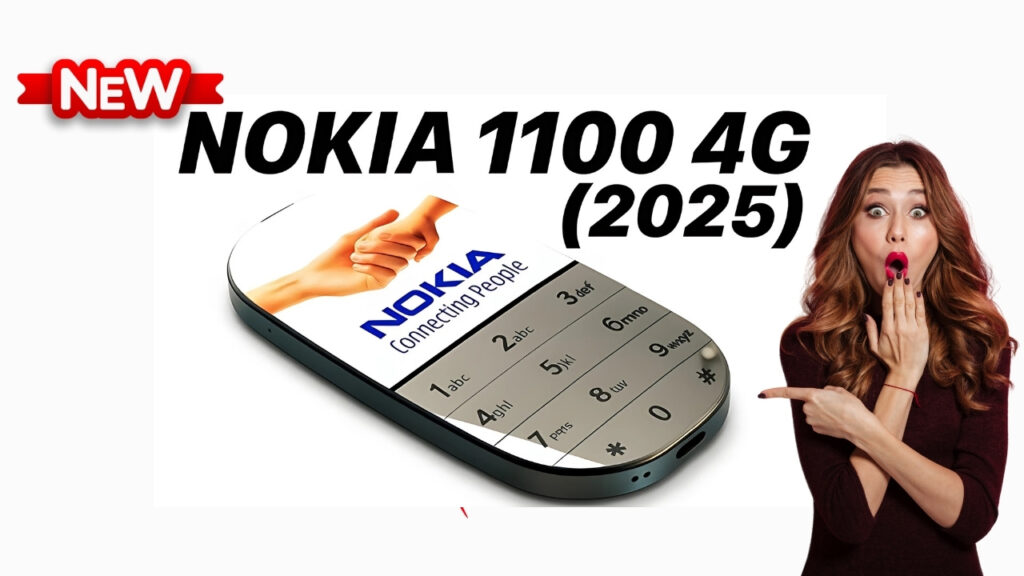Nokia 1100 returns: In the fast-moving world of mobile innovation, very few devices have left the kind of legacy that the Nokia 1100 did. Released in 2003, this modest handset went on to become a global legend, holding the title of the best-selling mobile phone in history with more than 250 million units sold. Its winning combination of simplicity, affordability, and reliability turned it into a household name across the world.
For many, the Nokia 1100 represents the early 2000s—its sturdy build, classic keypad clicks, and the unforgettable Nokia ringtone are etched in memory. But what exactly made this device so extraordinary in a market that was already leaning toward more advanced phones?
From Concept to Global Hit
The Nokia 1100 was officially launched on August 27, 2003, with simultaneous unveilings in Moscow, Russia, and New Delhi, India. This dual release highlighted Nokia’s strategy of focusing on emerging markets, where mobile phones were only beginning to become common.
Known internally as “Penny” during its development, the goal was clear: design a durable, user-friendly, and budget-friendly phone that could introduce millions to mobile communication for the very first time. With a price tag often under $50, the 1100 became the first mobile phone for countless people in Asia, Africa, and Latin America. For them, it wasn’t just a device—it was their entry into the digital age.
Specifications: Simple but Effective
While modern smartphones boast massive displays and endless apps, the Nokia 1100 kept things refreshingly basic:
-
Monochrome screen (96 × 65 pixels), easy to read in sunlight
-
GSM network support (900/1800 MHz globally, 850/1900 MHz in the U.S.)
-
850 mAh Li-Ion battery with up to 400 hours standby and 4.5 hours talk time
-
Dimensions: 106 × 46 × 20 mm | Weight: 86 g
-
50-contact phonebook capacity
-
Support for SMS and basic picture messaging
It didn’t have a camera, internet, or color display—but for millions of users, it delivered exactly what they needed: clear calls and reliable texting.
Features That Made It Special
The Nokia 1100 was far from feature-packed, but the little extras it did include made a world of difference:
-
Flashlight (activated via the “C” key), invaluable during power cuts
-
Dust-resistant keypad with non-slip grip
-
Classic games like Snake II and Space Impact+
-
Customizable covers for personalization
-
Monophonic ringtones with a composer to create your own tunes
-
Vibration alerts for discreet notifications
One of its biggest strengths was battery life. Unlike modern smartphones that often need daily charging, the Nokia 1100 could last days—or even weeks—on a single charge.
Durability: The Indestructible Phone
Perhaps the most famous aspect of the Nokia 1100 was its legendary toughness. The phone could survive falls, rough handling, dust, and even splashes of water. Stories abound of 1100s surviving washing machines, long drops, and years of wear without breaking.
Key durability features included:
-
Rugged plastic casing to absorb shocks
-
A recessed screen to reduce scratches
-
Simple internal design with fewer fragile parts
-
Dust-proof and resistant to minor water exposure
It earned a near-mythical reputation as the “indestructible phone.”
Sales Records and Market Success
Between 2003 and 2009, the Nokia 1100 sold over 250 million units, making it the best-selling mobile phone ever, surpassing even the most popular iPhones.
Its success came down to several factors:
-
Right timing – launched when mobile adoption was accelerating in developing countries
-
Affordable pricing – under $50, making it accessible to millions
-
Useful features – flashlight, long battery, and durability catered to real-world needs
-
Brand reputation – Nokia was already trusted worldwide
By 2005, Nokia held 32% of the global mobile phone market, with the 1100 being a major driver of that dominance.
Cultural and Social Impact
Beyond sales, the Nokia 1100 had a transformational impact:
-
Connected rural communities where landlines were scarce
-
Enabled small businesses to coordinate with suppliers and customers
-
Helped families stay in touch across great distances
-
Allowed farmers to receive weather and market updates via SMS
In many countries, the Nokia 1100 became a symbol of progress—a tool that empowered everyday people and reshaped how they lived and worked.
Legacy That Still Inspires
The lessons of the Nokia 1100 continue to influence phone design even today:
-
Battery life matters – users still expect long-lasting power
-
Durability is valued – rugged and reliable phones have their own niche
-
Practical features win – simple but useful tools (like flashlights) still make sense
-
Accessibility is key – affordable tech can change millions of lives
Even though smartphones dominate now, there’s growing nostalgia for simpler, reliable devices—something the Nokia 1100 represents perfectly.
Conclusion
The Nokia 1100 was more than just another phone. It was a global phenomenon that introduced mobile connectivity to millions, set new standards for durability, and proved that sometimes, less is more.
Its story is one of practical design, massive accessibility, and cultural significance—and its legacy lives on as one of the greatest success stories in mobile history.
